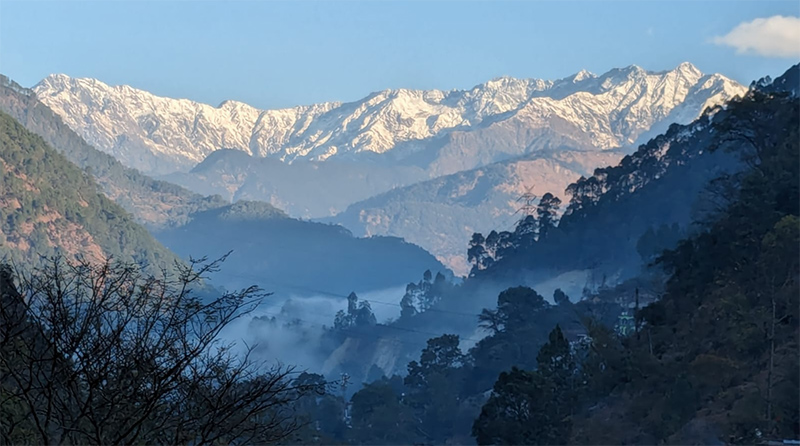Mountain Diaries: Our Heads are in the Clouds
January, 2024
It is January, and still quite cold in the northern states of India. Although the rivers are flowing and the promise of Spring beckons, you can still feel the nip in the air as the children head off to school as usual, walking across the undulating landscape of snow capped mountains, deep gorges, swelled streams and lakes, as the january thaw fills them. This is Uttarakhand, nestled between Tibet (Autonomous region of China) to its northeast, and Nepal, to its southeast. The capital city of Dehradun is still a winter retreat for those who want to escape the summer heat of the plains of India, and like other ‘hill stations’ so called from the British rule in India, there is a romanticism about this place, iconographic of Bollywood love scenes, a reference to the good life, good company, wellbeing and dreams of plenty. But the story of the mountains is also the story of borders, margins and sometimes isolation. Perhaps it is a similar story of rural communities disjointed from urban ones, but cultural and geographical distance is sometimes the story of conflicted identities and poverty. For a long time now, we have been fascinated by the singular environments in which children growing up among the mountains are moulded, even as their struggles and the wisdom of their connection with the natural world have become a critical piece of a global debate on human rights and planetary sustenance.
This is where our story begins. As most things when they begin, there is only a wish, born of need, that becomes a dream that might reach the clouds. And perhaps the children of other mountains. The UNESCO, designating 2022 as the year of the mountains, understands their regional importance to the biosphere: “Mountains are home to more than a billion people and to half of the world’s biodiversity hotspots. They harbour the highest levels of genetic, species and ecosystem diversity per unit area on Earth, which makes these ecosystems extremely vulnerable to habitat fragmentation and climate change.As the saying goes, there is strength in numbers. That is true of the World Network of Mountain Biosphere Reserves. Members can use the network to defend local perspectives, share and replicate best practices, foster transboundary collaboration and attract financial, institutional and logistical support.”
It was another year of the mountains, when cousins, Aditi Kaur and Smita Patel looked around their own mountain home and had a thought: why not the children of the mountains? Who is listening to them? There is a wisdom in these communities, and an enthusiasm in these kids that has been contained and nurtured by their communities, the clear, clean air of the mountains, isolated though they might be. And so, The Mountain Children’s Foundation was born in Dehradun. Now an established lifeline for the mountain children of Uttarakhand, they are twenty years strong, founded on these basic principles: educate and equip the children of the mountain communities to become community builders, able to benefit from a network of knowledge and skill, agents of their own future. In so doing, Smita and Aditi discovered a secret weapon; the incredible power of the imagination, enthusiasm, joy and courage that is unleashed when children have their needs met, their thirst for learning satisfied, and are allowed to thrive wherever they are. This is not an easy task, because there are too many forces circumscribing that boundless energy. The Mountain Children’s Forum takes its origins from the Mountain Children’s Foundation, the NGO in India, and exists to connect the children of the mountains worldwide. This blog will record our journey, our challenges and our growth. What do the children in other mountains do? How do they live? How can we learn from each other? How can we work together towards a more meaningful future worthy of our children?

